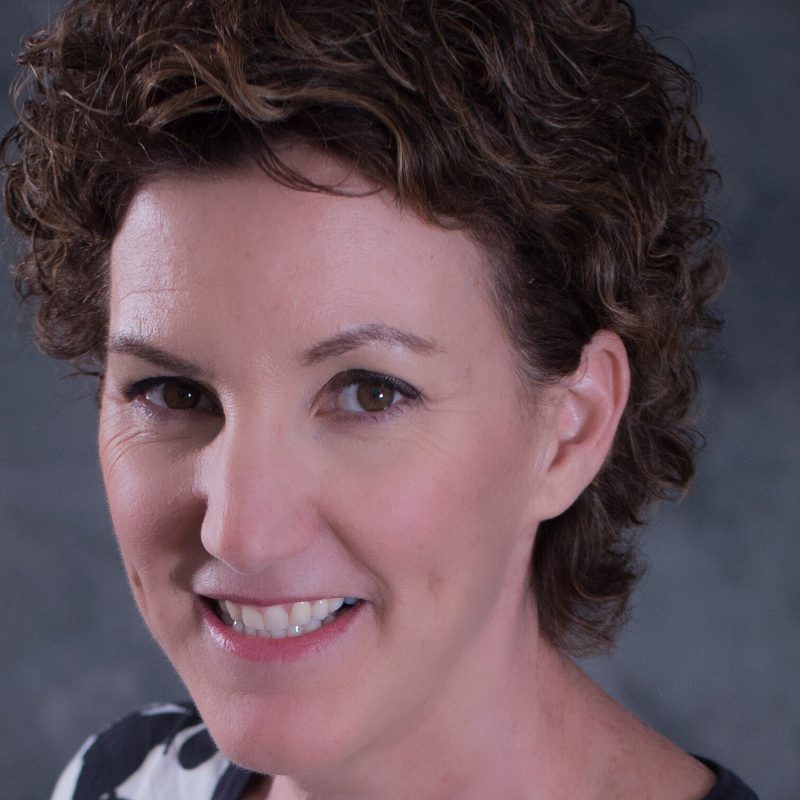Why successful HR Technology Projects Never End
EXCLUSIVE Interview with AkzoNobel – Going live with a new project is just the beginning, not the end.
Why You Should Care
AkzoNobel credit their evolving improvement plans as key to every HR tech project success
They operate in over 60 markets and their global guidelines allow for localized flexibility
Technology, they say, is 30% of the success and 70% is how it's iterated and evaluation
Investing in new integration is big business, especially for organizations with a global reach. Anat Markus, Global HR Operations, AkzoNobel argues that for her, the most successful HR tech projects are the ones that never end but enter a continuous improvement cycle.
AkzoNobel is a paints and coating company whose HQ is in the Netherlands, with operations in over 60 markets. Anat is responsible for the delivery of the day-to-day HR services and processes which is then managed by HR managers in their respective countries. Her teams are ultimately responsible for making sure that AkzoNobel’s managers and employees are getting the support they need to perform successfully, by ensuring processes are simple, standardized, and compliant.

UNLEASH: What’s been the biggest implication for your organization as a result of the coronavirus pandemic and what have been some of the changes you are seeing?
Anat: First, I think this period highlights that people have different needs and have different expectations. The crisis met each one of us in many ways. We use the term Diversity and Inclusion a lot in HR and maybe we can take it in a wider context and look at the diversity of needs, the diversity of communication styles etc. For example, are our people more introverts or extroverts? Do they need different types and styles of working? Some people like quiet environments, some people like noisy environments; some people love the energy of an office, some people don’t love them. The pandemic has intensified this theme of personalizing solutions and personalizing experiences for me.
The notion of Diversity and Inclusion came to life again with COVID within AkzoNobel from what I saw, and perhaps much more than before, and I know we’ll keep pursuing this path as we continue with more informal, virtual gatherings. In my experiences, meetings in the past were more about ‘this is the agenda, these are the bullet points, here’s what we’re going to cover, and here are the slides.’ But through COVID I’ve seen so much more of the individuals, whether it was a colleague sneering at a cold virtual coffee or seeing each other without a suit or without makeup or with uncut hair or with a longer beard, so everything becomes much more informal and personal. I really think people have connected to each other, much more in this way and I think it’s going to continue because it’s created a new environment for people to be much more personal and vulnerable, which they appreciate.
we encouraged more flexibility and agility to the changing local needs.
UNLEASH: As your operations are global, are you experiencing different circumstances in each location and having to keep that coordinated? Have you remained functioning throughout?
Anat: What we accepted in the first instance is that this was going to be very dynamic and very different from country to country and perhaps even from site to site. So, even within a country, we realized fairly early on that if we have a site in northern Italy and in southern Italy, it’s not necessarily going to require the same solution and the same extent of emergency or extent of putting people on leave for example.
So, we defined global guidelines which were principles that we wanted the entire company, regardless of where they operate from, to follow. These guidelines and principles related to secure pay from government assistance programs and how to use vacation days and how to use ‘live’ days. Then we let every country manage the day-to-day operations based on the changing government definitions and restrictions of their location. Every week we had an ‘Exception Committee’, so if a country needed to move away from our core global guidelines, we had a team of a few HR leaders together with the legal department, who came together to discuss the exception and agree whether it made sense to go ahead with it or not. This allowed much more flexibility and agility to the changing of local vs. global needs.

UNLEASH: Being quite a complex thing to manage and set up, do you feel like the opening up of communications between functions and offices will have a lasting impact in the business?
Anat: We want it to continue and accept that we will need to work at it because as humans it’s very easy to get back to old habits. So, we are speaking as the HR leadership team now on how to make sure that some of those nice behaviors and the collaboration and the agility of coming together and co-creating doesn’t go away. Our actions now are to embed this through our ways of working and by focusing on these new skills that we will in turn develop and reinforce through our essential leadership programs. We don’t want some of those nice things that happened as a result of COVID to go away and we are going to be spending time thinking what the best way is to do that.
it’s not that the HR technology is getting more complex, it’s that the expectations of our users are becoming higher, raising the bar for us. Users want things to be faster, they want things to be simpler, they want things to be more intuitive.
UNLEASH: We also wanted to speak with you about our recent study on HR Tech Projects, and the conclusion that HR infrastructures are becoming more complex. We see that this has meant companies need to define and execute on the system integration needs for them to be successful much more so than before. This is an area that resonates deeply with your role and what you do, so we’re keen to get your perspective.
Anat: In my view, it’s not so much that the HR technology is getting more complex, it’s that the expectations of our users are becoming higher, raising the bar for us. Users want things to be faster, they want things to be simpler, they want things to be more intuitive, they want our services and processes to be stress free, they want to make sure their data is secured. Therefore, to me, these expectations can be met partially by better integration, but also understanding that integration isn’t just about moving data from one system to another system, but is an opportunity to really enhance and simplify the user experience and this is something that we sometimes overlook.
UNLEASH: Enhancing and simplifying the user experience, combined with the HR technology, how do you bring them together so that you’re making it real?
Anat: Let’s think about you as a user, and you go into the company website, and maybe you have five different applications or services or places that you must go to. You’re not sure which one to choose every time you go in and maybe you have a slightly different username assigned for each application, your experience is therefore stressful and confusing. But, if we had a plan to integrate the applications and the data was flowing from one application to the other, that would mean that you would have a seamless experience when it comes to how your data is used and where and how the data is moving from one place to another.
Creating seamless experiences means that employees don’t have to have concerns like ‘is this just updating people services, or do I also need to call the payroll team or do I also need to send it to my manager or HR manager’ and so integrating our HR technology systems creates a much better experience and stress-free environment. Worrying about the data and how everything flows seamlessly is something that we can take care of, on behalf of the employee, to make their life much more efficient.
UNLEASH: Within your organization, how do you work with the more technical teams that are responsible for the development of some of the implementation of these systems whilst ensuring that HR needs and the technical requirements are met?
Anat: Well, at the first phase during a project it’s very important that when we define the scope, we also include integration. So, making sure that we also look at what the system requires to feed the current system and where the data from the system needs to go. It also needs to go often to other non-HR systems, like expenses systems or travel systems or procurement systems, so that needs to be mapped as part of the project.
Once we go live with different platforms, that’s really when things start for us and through continuous improvement we can then optimize and make things more efficient
Once we go live with different platforms, that’s really when things start for us and through continuous improvement of user experience and process flows, we can then optimize it and make things more efficient. Integrations are part of us continuously improving the employee experience, but also enables us to improve our data, systems and processes. So, whether it’s part of a project or part of a continuous improvement plan, you need to make sure integration is part of the scope for your project.
UNLEASH: Are you constantly referring to this improvement plan? Is it within your company strategy and how are you driving that element of integration of HR projects forward?
Anat: In 2019, we went live with the implementation of SuccessFactors which centralized our employees’ performance, goals, compensation, learning, recruiting, everything. That was done in a very short time. It also included integrations to payroll in the nine largest countries. Due to the very rapid implementation plan, many of the things weren’t adopted or weren’t fully optimized or leveraged so we’ve gone back and we’ve improved the experience since.
Going live is really the beginning of everything. It’s not the end of everything. And that’s some of the misconception that I think we have about projects.
once you go live, that’s when everything starts not ends. We need to drive adoption, we need to drive education, we need to look at the process. We need to build KPIs, we need to improve data
UNLEASH: Picking up on the executional needs, the constant cyclical “Review, View and Plan’, is everyone bought into that understanding? Or, is that a lesson that’s always going on?
Anat: I think that’s one of the big takeaways. The project is just a phase in your transformation. Sometimes we put all our heart and effort into a project, and we think that the minute we go live, all our problems are going to be solved. That all our users are going to be happy and it’s just going to be magic because we work so hard to bring it to life, so what else is left to do? And that’s a huge, huge mistake. Because once you go live, that’s when everything starts not ends. As an HR team you then need to come together with IT, together with People Services, all the ecosystem, to then get into a rhythm of continuous improvement.
We need to drive adoption, we need to drive education, we need to look at the process. We need to build KPIs to improve the process, we need to improve data flows, we need to improve the data quality. It doesn’t happen when the project goes live. Everything that I have just listed happens after we go live. It’s like a child that you continuously need to nurture and feed and care for and develop and grow. You don’t just give birth and go somewhere and enjoy! We spend a lot of time making kids become adults and even then, it’s never done. We need to set expectations with leadership that, yes, the first phase is getting the project and going live with it and then that’s when all the fun starts.
One thing to remember is that many organizations are transforming and going through a lot of change. So, we constantly need to, as HR leaders, understand what is the environment that we are operating within and how and what is the best approach? It requires a lot of continuous discussions and ultimately, somebody needs to own the responsibility for making sure things work. If people really embrace the fact that this is something that they need to worry about then the ability to be agile and focus on the areas for improvement that are right for this point in time will make the most impact.
Q2 highlight: Our CEO, Thierry Vanlancker, has signed the Declaration of Amsterdam. Organized by Workplace Pride, signing the declaration is a visible and very positive way to show our support for LGBTI+ inclusion. Learn more https://t.co/BjSSXKb0HP #TrueColors #PeoplePlanetPaint pic.twitter.com/r3hs9JBMTb
— AkzoNobel (@AkzoNobel) July 22, 2020
UNLEASH: In our survey, 16% of the 700 people considered their HR tech projects highly successful, which means there was that 84% didn’t. Why do you think this is the case?
Anat: I see that number and I truly get depressed. I would be hoping that by now we’ve learned something in the last few years to make those projects come to life. My first thought would be, when was this failure defined, after the project was launched? After one day, after one week, after one year, after two years, and what were you doing after you went live? How much effort and energy was involved in making this project come to life and what resources were involved; what was the mindset of the process managers or the HR team? I will say it again and again and again until you get tired of it, that going live is not the end. It’s the beginning.
HR Technology to me is 30% of the success and 70% is everything else related to how you define your processes.
Failure to me is a bigger question. How do you measure it? Also, what have you done to stop yourself or the team or the functions from failing? Sometimes people haven’t always outlined a shared understanding of what success is and sometimes that means that some people’s expectations for projects can be higher. The definition of what success actually means in the context of the project or what it can achieve, when it should achieve that by and how it should achieve is a conversation that I think people need to have.
HR technology to me is 30% of the success and 70% is everything else related to how you define your processes. How do you define the roles and responsibilities? Let’s be honest, most of the technologies are doing more or less the same thing. You can take an amazing HR technology that’s rated the highest and the best and it’s a roars force of technology. But then you don’t have the road and you don’t have the gas and you don’t have the driver and you just have a shiny car standing in the parking lot, but nobody knows how to drive it, and the roads are not paved for it and then nobody uses it.

So, to me, it’s less about “Should we get this technology or that technology” and more about “what are we expecting this technology to deliver? How do we want it to improve employee engagement and experience? And how do we make managers make better decisions? How are they becoming part of the new ways of working”, and that requires so much work, that the part of the implementing that HR technology is the easiest part of the entire thing. Everything else is so much harder and takes so much more energy. This is where you really need to set expectations with everybody.
I see HR technology project teams not being collaborative enough and not being very transparent. If you can put the right team in place and be inclusive, I think the opportunity to make a better product
UNLEASH: 40% of respondents were reporting three or more problems that impacted HR tech project success, what do you think can be done to improve that?
Anat: First, I see project teams not being collaborative enough and not being very transparent and not sharing the responsibility. Finance people are not included in the conversation. Legal people are not included in the conversation. If you can put the right team in place and be inclusive, I think the opportunity to make a better product and a better experience rises significantly. Having everybody around the table representing different elements of the work, of the process, of the culture is important and having the right skills.
What I also see many times is that we have people who have been with the organization for a long time, they have a lot of knowledge of the old ways of working, but they have never experienced a project of the size and complexity of this magnitude. They really have no idea what to expect and how to set expectations because they’ve just never done it and if everybody on the team is like that and nobody has the experience and the skill again the chances of being successful are small. It requires new skills, working in this world and working with these methodologies and therefore you need to have good people with the right experience.
Evidently, our communities still don’t embrace technology enough. HR teams are the last to adopt. I would really like to see, especially the new generation of HR, not shy away from HR technology, not shy away from tools and to have a dialogue with their IT partners. Ask the questions and really be much more data-driven and process-driven than today because I think if we close that gap as HR professionals, we will become much better business partners and we will be able to provide a work environment that is more agile and engaging and supporting business decisions and really making an impact. So, not everybody needs to be an Organizational Design expert. We need a lot more people who are also experts in understanding process, technology data, and how they all come together.
Sign up to the UNLEASH Newsletter
Get the Editor’s picks of the week delivered straight to your inbox!

Global HR Operations at AkzoNobel
HR executive with 20 years’ experience in strategic planning, designing, implementing and leading global HR transformations.
Contact Us
"*" indicates required fields
Partner with UNLEASH
"*" indicates required fields